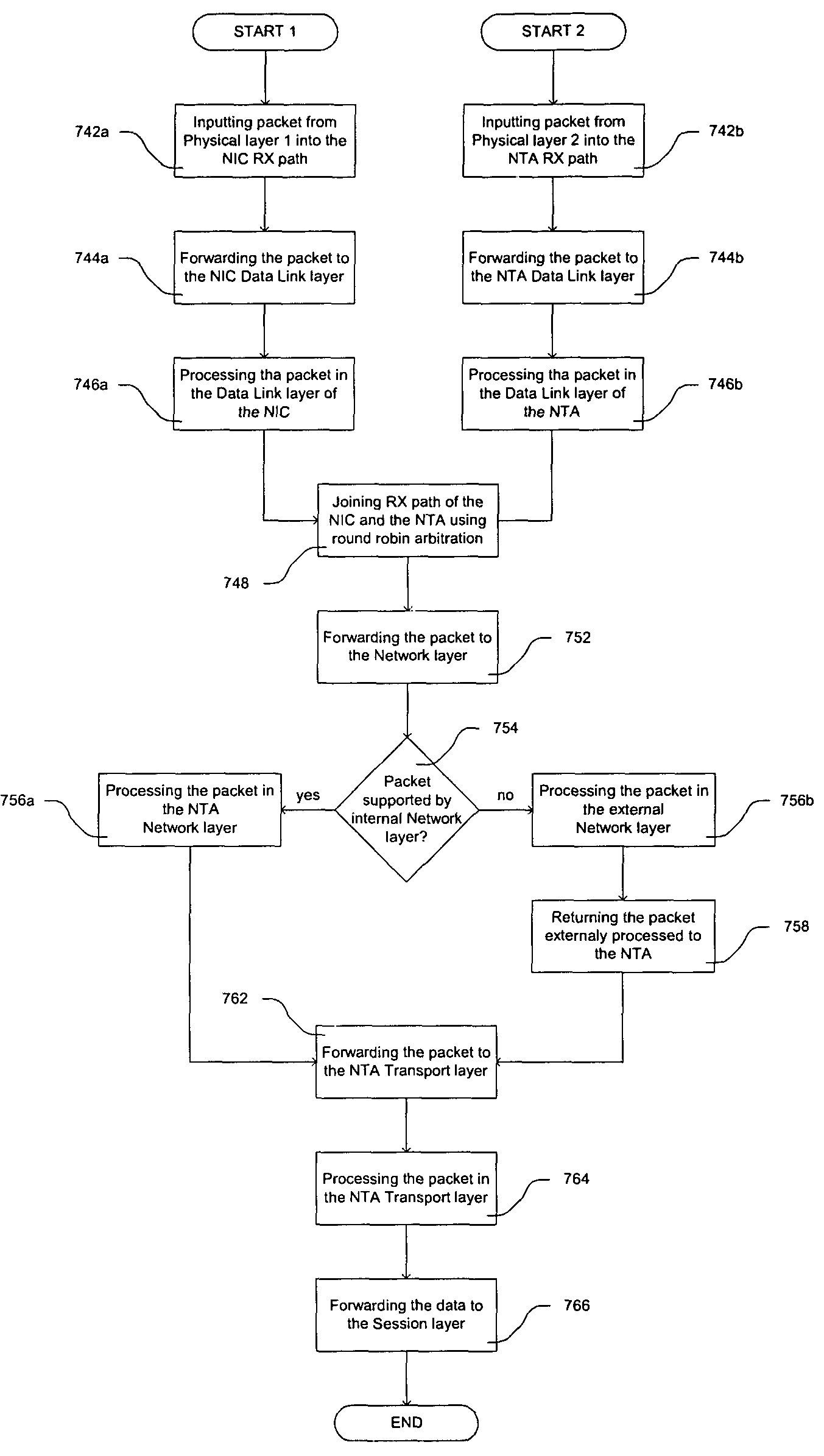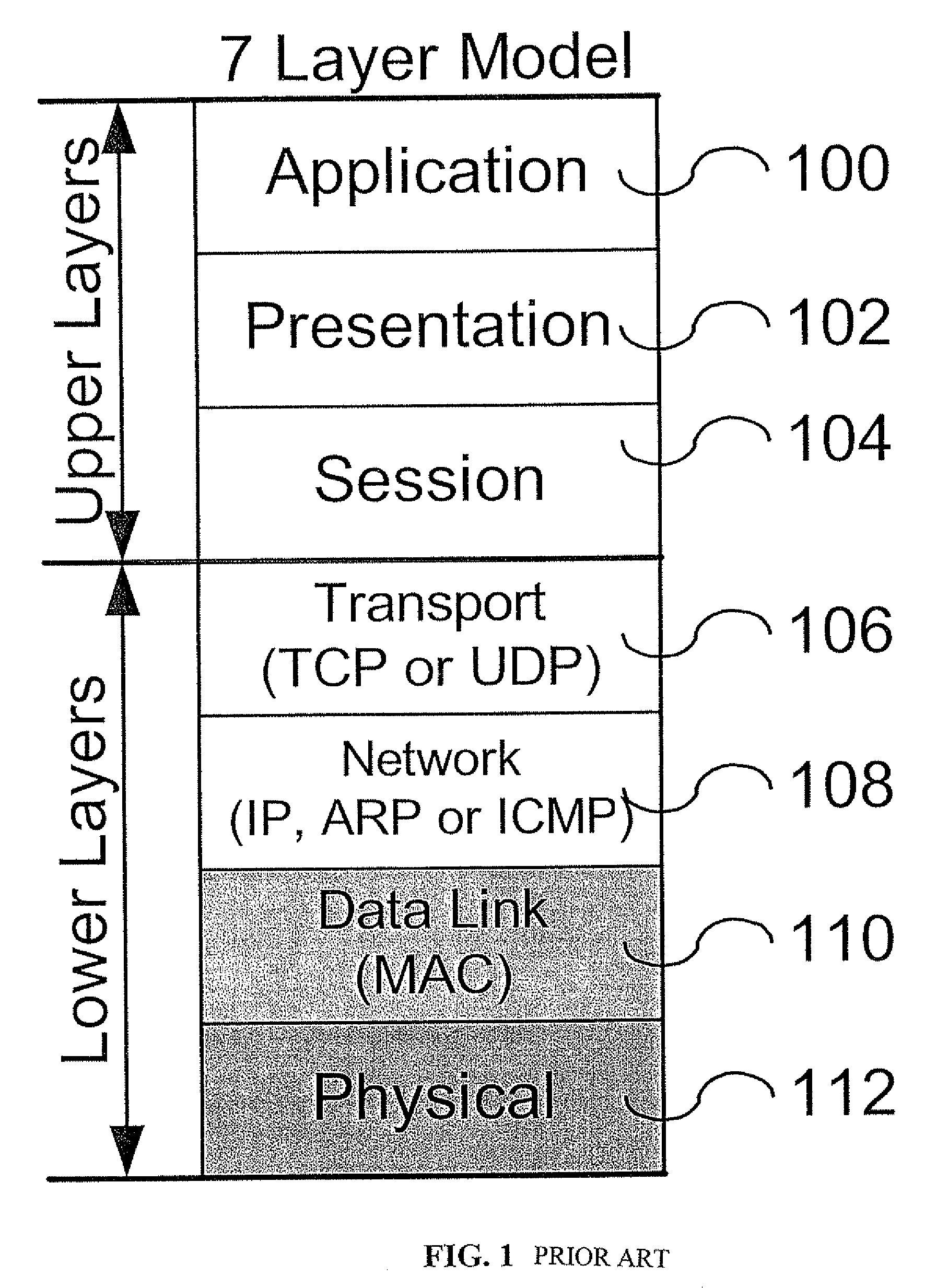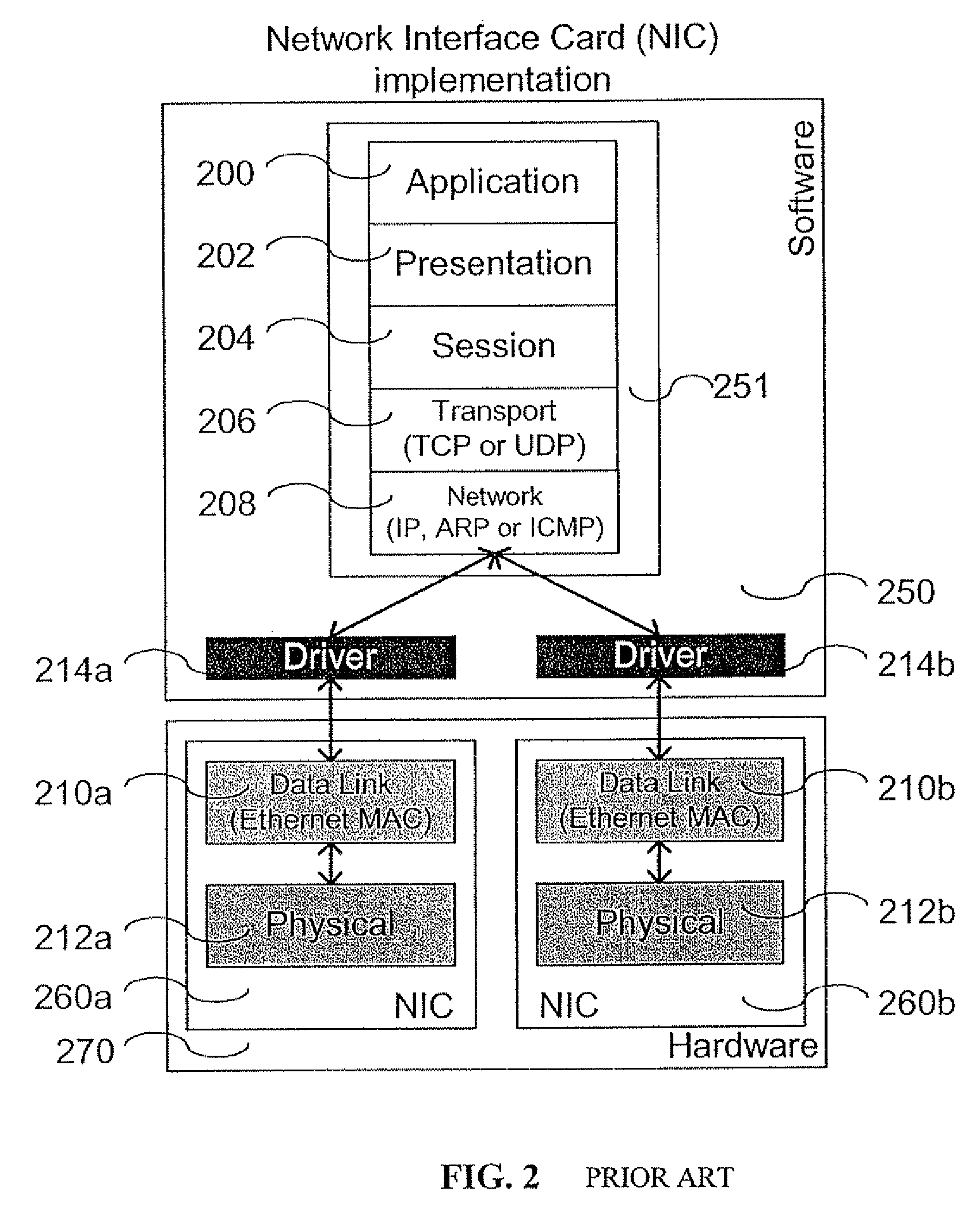Network traffic accelerator system and method
a network traffic and accelerator technology, applied in the field of communication networks, can solve the problems of increasing cpus, less time available for other work, and consuming the most available processing power of the fastest commercially available cpu, so as to reduce or offload cpu tasks, increase the available cpu processing power, and enhance the overall system performance
- Summary
- Abstract
- Description
- Claims
- Application Information
AI Technical Summary
Benefits of technology
Problems solved by technology
Method used
Image
Examples
Embodiment Construction
[0046]FIG. 7a shows a preferred embodiment of a Network Traffic Accelerator (NTA) 700, which implements internally in hardware a Transport layer 706, a Network layer 708 and an internal Data Link layer 710 as well as additional elements described below. NTA 700 has all the elements, and can perform all the functions of system 600 of FIG. 6, but comprises additional elements that provide new and advantageous functionalities. Specifically, NTA 700 can perform the processing of internally sourced packets passing through the internal Data Link layer as described in FIG. 6, and, in addition, processing of externally sourced packets from an external Data Link layer. The additional elements include six additional connections 712, 714, 716, 718, 720 and 722, three arbiters 724, 726 and 728, and three switches 730, 732 and 734. These additional elements enhance the functionality of the system by allowing it to process data from paths other than an RX path 740 (630 in FIG. 6) and a TX path 75...
PUM
 Login to View More
Login to View More Abstract
Description
Claims
Application Information
 Login to View More
Login to View More - R&D
- Intellectual Property
- Life Sciences
- Materials
- Tech Scout
- Unparalleled Data Quality
- Higher Quality Content
- 60% Fewer Hallucinations
Browse by: Latest US Patents, China's latest patents, Technical Efficacy Thesaurus, Application Domain, Technology Topic, Popular Technical Reports.
© 2025 PatSnap. All rights reserved.Legal|Privacy policy|Modern Slavery Act Transparency Statement|Sitemap|About US| Contact US: help@patsnap.com



